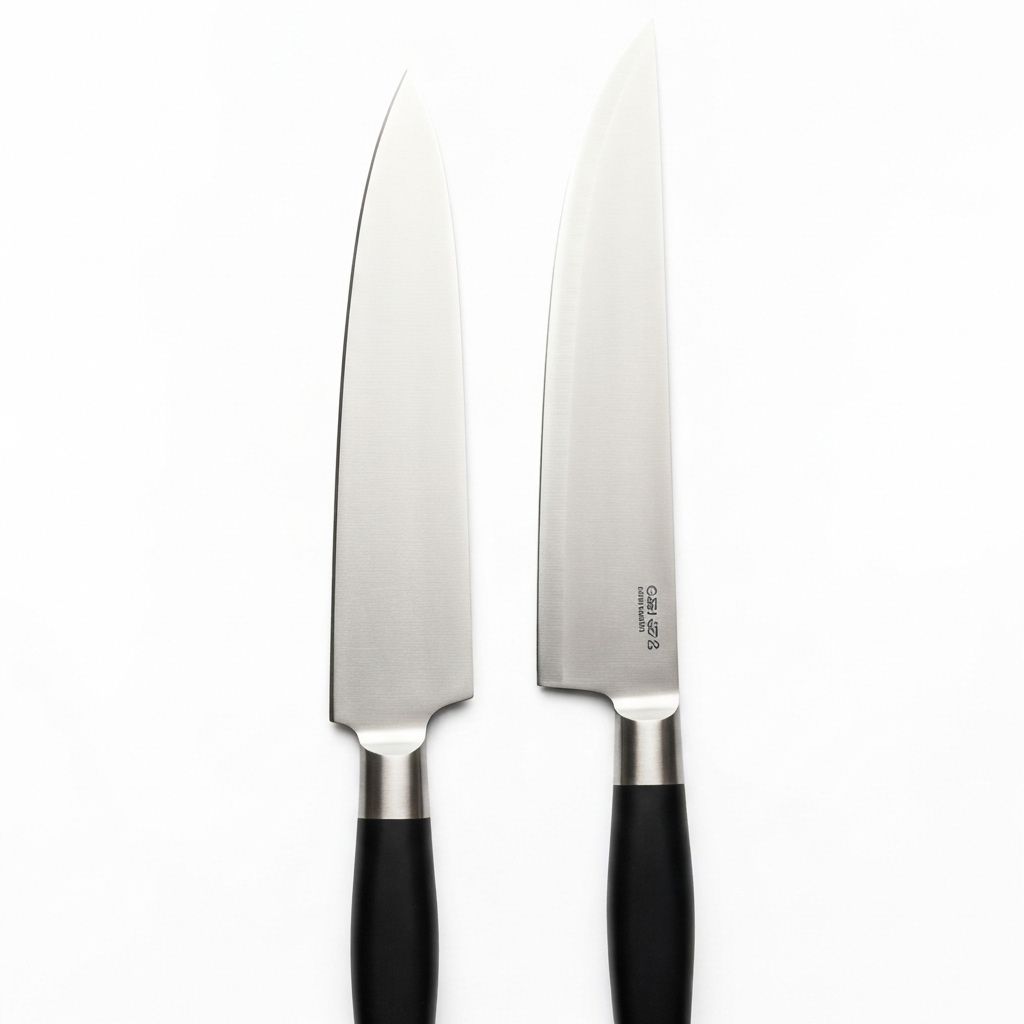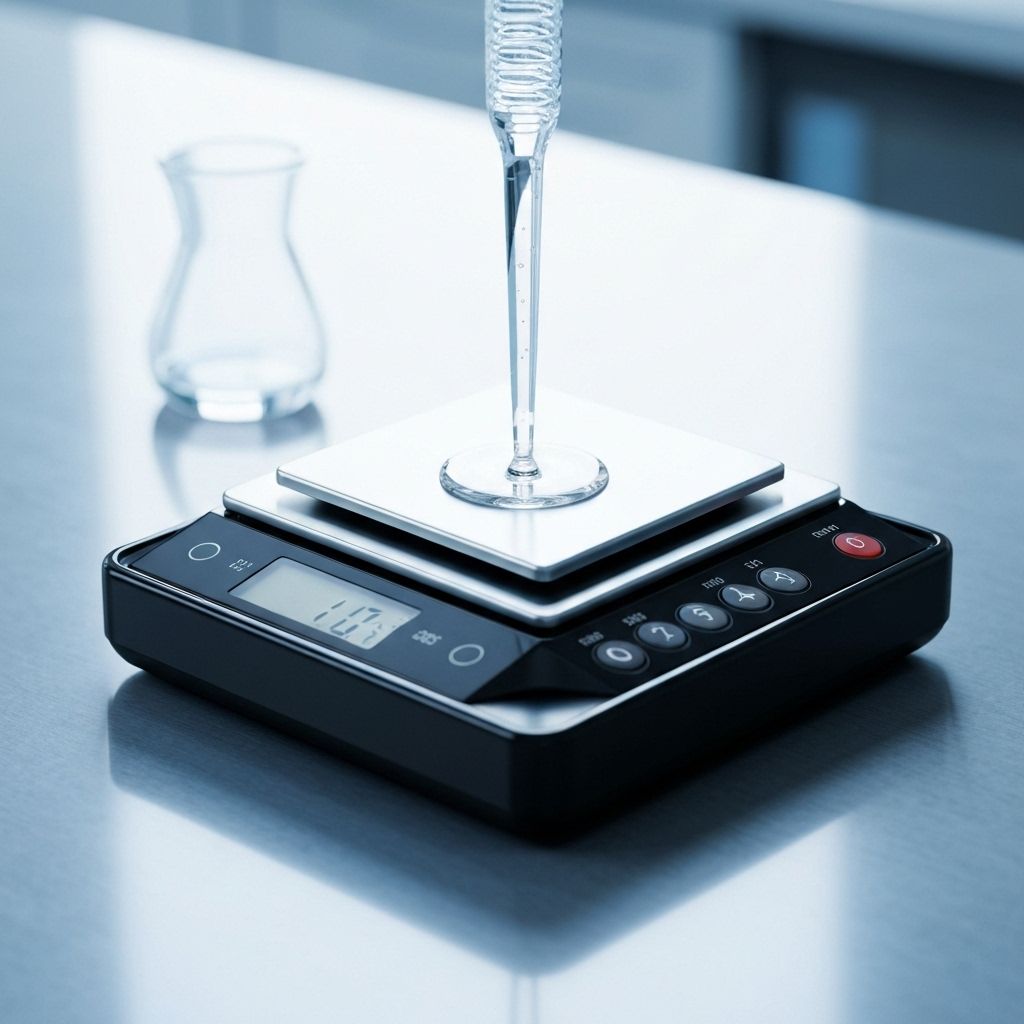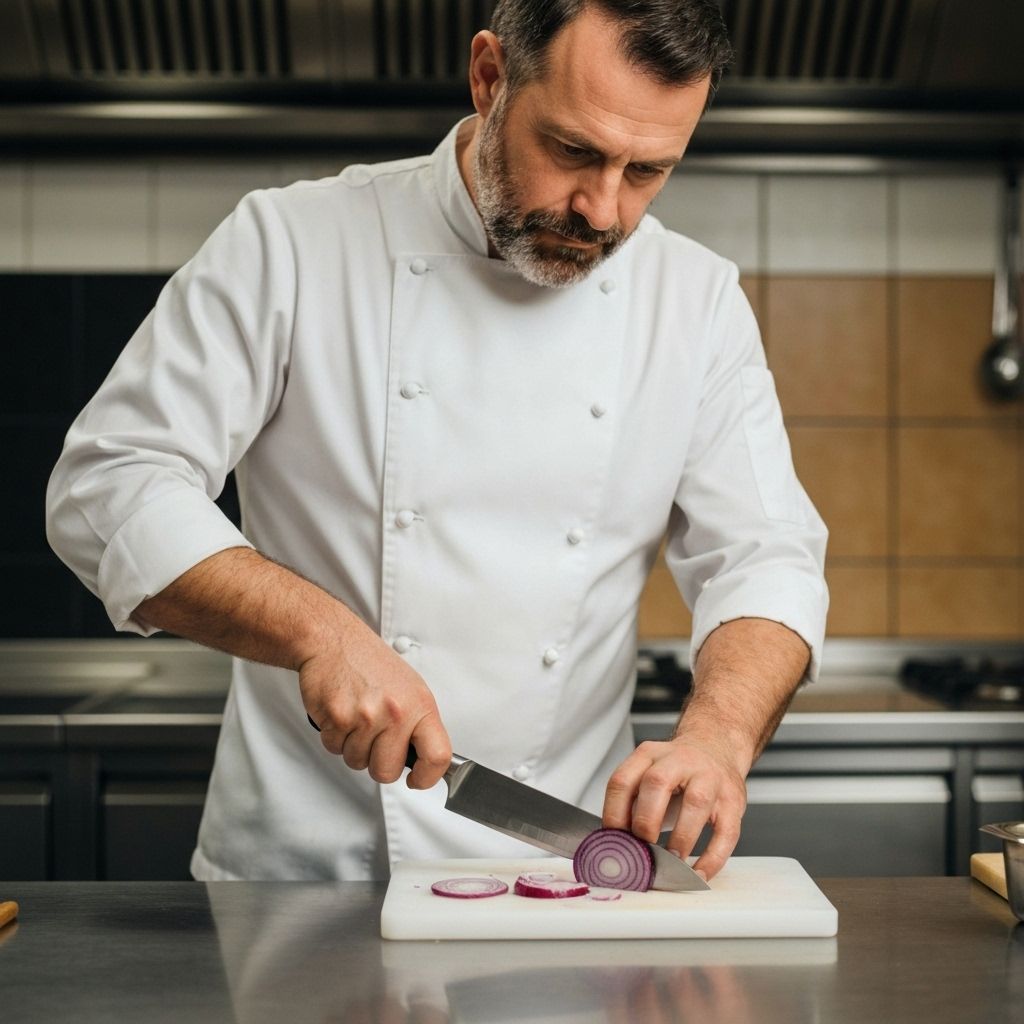Chef's Knife vs Santoku: Which Blade Suits Your Cooking Style?
Compare the design, performance, and ideal applications of Western chef's knives and Japanese Santoku blades to make an informed choice.
- Answer the main question in one sentence.
- Give the best pick and why in one line.
- Link to the product or guide for next step.

The chef's knife versus Santoku debate represents more than regional preferences—it reflects fundamentally different cutting philosophies. Understanding these differences enables selection based on your cooking style rather than marketing claims or tradition.
Chef's knives feature curved blades that enable rocking cuts. The 8-10 inch blade curves upward to a pointed tip, allowing the knife to pivot on the board while the blade rocks through ingredients. This motion proves efficient for repetitive chopping tasks like mincing herbs or dicing onions. The pointed tip facilitates detailed work like removing tomato cores or trimming fat.
The blade's weight contributes to cutting performance. Heavier chef's knives use momentum to power through dense ingredients, requiring less downward pressure from the user. This proves advantageous when processing large volumes or tough ingredients. However, the additional weight can cause fatigue during extended use.
Santoku knives employ a different cutting philosophy. The straighter edge and flatter profile suit up-and-down chopping motions rather than rocking cuts. The 5-7 inch blade length provides excellent control for precise work, while the wide blade offers knuckle clearance during rapid chopping. The rounded or sheep's foot tip reduces the risk of accidentally piercing ingredients.
Many Santoku blades feature granton edges—small oval divots along the blade sides. These create air pockets that reduce food adhesion, particularly valuable when slicing sticky ingredients like cheese, potato, or raw fish. This feature makes Santoku knives especially effective for creating uniform slices.
Weight differences affect handling characteristics. Santoku knives typically weigh less than comparable chef's knives, offering a more agile feel that some users prefer. The lighter weight reduces fatigue but provides less momentum for cutting through dense ingredients. Personal preference determines whether this trade-off enhances or limits performance.
Blade geometry affects cutting performance beyond shape. Japanese Santoku knives often feature thinner blades ground to more acute angles (15 degrees per side versus 20 degrees for Western knives). This creates exceptional sharpness but requires more careful use to avoid chipping. Western chef's knives sacrifice some cutting performance for increased durability.
The choice ultimately depends on cutting technique. If you naturally use rocking motions and frequently need a pointed tip, chef's knives feel more intuitive. If you prefer up-and-down chopping and value precise control, Santoku knives offer advantages. Many experienced cooks own both, selecting based on the specific task.
// RELATED_ARTICLES

Laboratory Precision in the Kitchen: Advanced Weighing Techniques
Learn how precision measurement transforms cooking from art to science, enabling perfect reproducibility.

Fundamental Knife Skills: Precision Cuts for Professional Results
Master the essential cutting techniques that form the foundation of professional culinary practice.